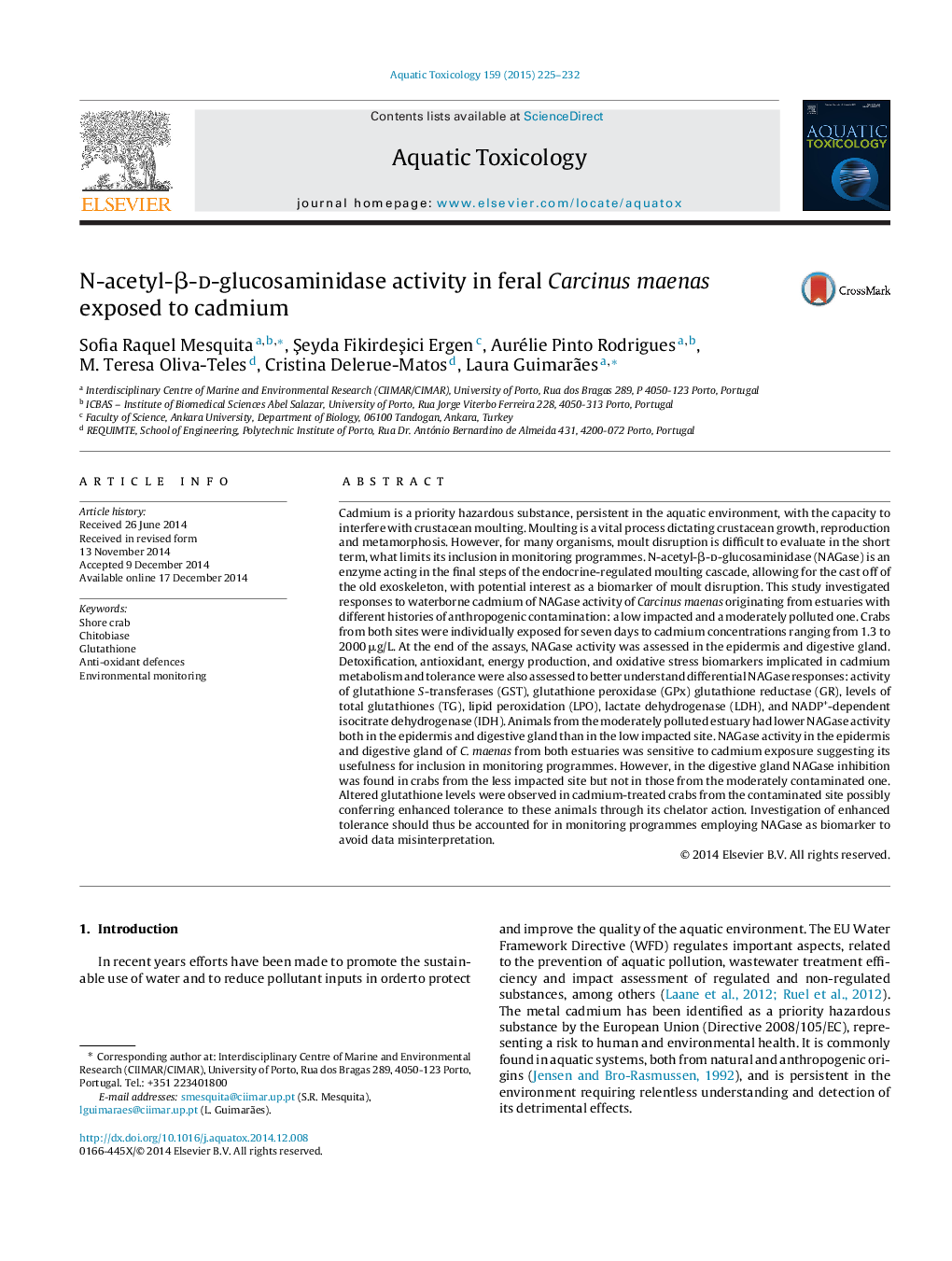| Article ID | Journal | Published Year | Pages | File Type |
|---|---|---|---|---|
| 6382312 | Aquatic Toxicology | 2015 | 8 Pages |
Abstract
Cadmium is a priority hazardous substance, persistent in the aquatic environment, with the capacity to interfere with crustacean moulting. Moulting is a vital process dictating crustacean growth, reproduction and metamorphosis. However, for many organisms, moult disruption is difficult to evaluate in the short term, what limits its inclusion in monitoring programmes. N-acetyl-β-d-glucosaminidase (NAGase) is an enzyme acting in the final steps of the endocrine-regulated moulting cascade, allowing for the cast off of the old exoskeleton, with potential interest as a biomarker of moult disruption. This study investigated responses to waterborne cadmium of NAGase activity of Carcinus maenas originating from estuaries with different histories of anthropogenic contamination: a low impacted and a moderately polluted one. Crabs from both sites were individually exposed for seven days to cadmium concentrations ranging from 1.3 to 2000 μg/L. At the end of the assays, NAGase activity was assessed in the epidermis and digestive gland. Detoxification, antioxidant, energy production, and oxidative stress biomarkers implicated in cadmium metabolism and tolerance were also assessed to better understand differential NAGase responses: activity of glutathione S-transferases (GST), glutathione peroxidase (GPx) glutathione reductase (GR), levels of total glutathiones (TG), lipid peroxidation (LPO), lactate dehydrogenase (LDH), and NADP+-dependent isocitrate dehydrogenase (IDH). Animals from the moderately polluted estuary had lower NAGase activity both in the epidermis and digestive gland than in the low impacted site. NAGase activity in the epidermis and digestive gland of C. maenas from both estuaries was sensitive to cadmium exposure suggesting its usefulness for inclusion in monitoring programmes. However, in the digestive gland NAGase inhibition was found in crabs from the less impacted site but not in those from the moderately contaminated one. Altered glutathione levels were observed in cadmium-treated crabs from the contaminated site possibly conferring enhanced tolerance to these animals through its chelator action. Investigation of enhanced tolerance should thus be accounted for in monitoring programmes employing NAGase as biomarker to avoid data misinterpretation.
Related Topics
Life Sciences
Agricultural and Biological Sciences
Aquatic Science
Authors
Sofia Raquel Mesquita, Åeyda FikirdeÅici Ergen, Aurélie Pinto Rodrigues, M. Teresa Oliva-Teles, Cristina Delerue-Matos, Laura Guimarães,
